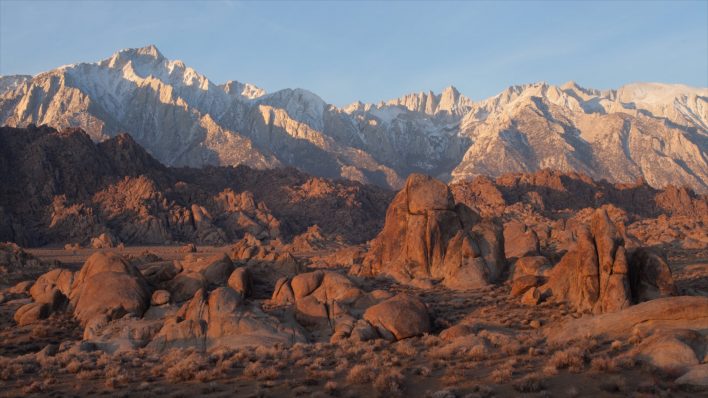Lel Tone was having a hard spring.
While the ski guide was in Alaska last season, some friends died in a helicopter crash, and she carried the sorrow from it back home to California’s Lake Tahoe. Upon her return, Flylow co-founder Dan Abrams and filmmaker Bevan Waite gave her an opportunity for some on-snow healing in the Eastern Sierra Nevada.
Making a ski film might seem like an odd therapeutic, but Tone jumped at the chance for a weekend filming and skiing with Brennan Lagasse, an educator, guide and Tahoe resident who Tone called “a healing, loving human.”
“The idea of going and spending time with him in the mountains with almost like, ‘Wow, the universe is gifting me with some healing right now,” she says.
The result is “Eastside Story,” which follows Tone and Lagasse as they pilgrimage for a weekend of big objectives and camping in the Eastern Sierra, a massive stretch of peaks from near Tahoe to south of Mount Whitney. Splitting off Highway 395, they drive deep into the hills, set up a basecamp and seek out steep, remote lines.
The movie is an homage to the mountains Tone and Lagasse call home and an exploration of how the skiers connect with them and each other. The longtime Tahoe residents have skied the Eastern Sierra for years, drawn by its drive-up access to a “lifetime” of big lines, as Lagasse puts it. Because both are so busy, they don’t ski together much, so they were eager to spend some time on the skintrack in a place special to both of them.
Ski films once had a singular mission—stoke. Comedic onesies and gratuitous pow shots amped up viewers, but in recent years filmmakers have evolved toward artsy approaches and philosophical narratives. “Eastside Story” certainly embraces that movement. We see Lagasse and Tone camping in the foothills, discussing their decision-making process and sipping predawn coffee, in addition to watching them find ribbons of Sierra corn.
That narrative underpinning drew Lagasse to the project. As a sustainability and social justice educator at Sierra Nevada College, he is in the business of helping people understand complex issues around land use and natural history. Films like “Eastside Story” give guides like him and Tone a new avenue to help others connect with the natural world. Viewers may not spend dozens of days each winter in the backcountry like they do, but they can vicariously develop an appreciation of a zone like the Eastern Sierra through the film.

“It teaches people more to be in tune with their surroundings and can actually play a bigger role in terms of conservation and protection and sustainability,” he says.
For Lagasse and Tone, the enduring notion that skiing is more than simple pow shots, that it connects us to land, history and people, was a crucial part of the project and one they’re happy to see out in the world. After all, it’s what drew them to the mountains in the first place and keeps them coming back when they’re in need of healing.










Related posts: